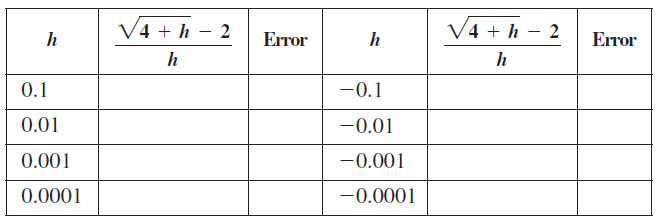Assuming the limit exists, the definition of the derivative If h > 0, then this approximation is
Question:
Assuming the limit exists, the definition of the derivative

implies that if h is small, then an approximation to f'(a) is given by

If h > 0, then this approximation is called a forward difference quotient; if h < 0, it is a backward difference quotient. As shown in the following exercises, these formulas are used to approximate f' at a point when f is a complicated function or when f is represented by a set of data points.
Let f(x) = √x.
a. Find the exact value of f'(4).
b. Show that 
c. Complete columns 2 and 5 of the following table and describe how behaves as h approaches 0.
behaves as h approaches 0.

d. The accuracy of an approximation is measured by
error = |exact value - approximate value|
Use the exact value of f'(4) in part (a) to complete columns 3 and 6 in the table. Describe the behavior of the errors as h approaches 0.
Step by Step Answer:

Calculus Early Transcendentals
ISBN: 978-0321947345
2nd edition
Authors: William L. Briggs, Lyle Cochran, Bernard Gillett





